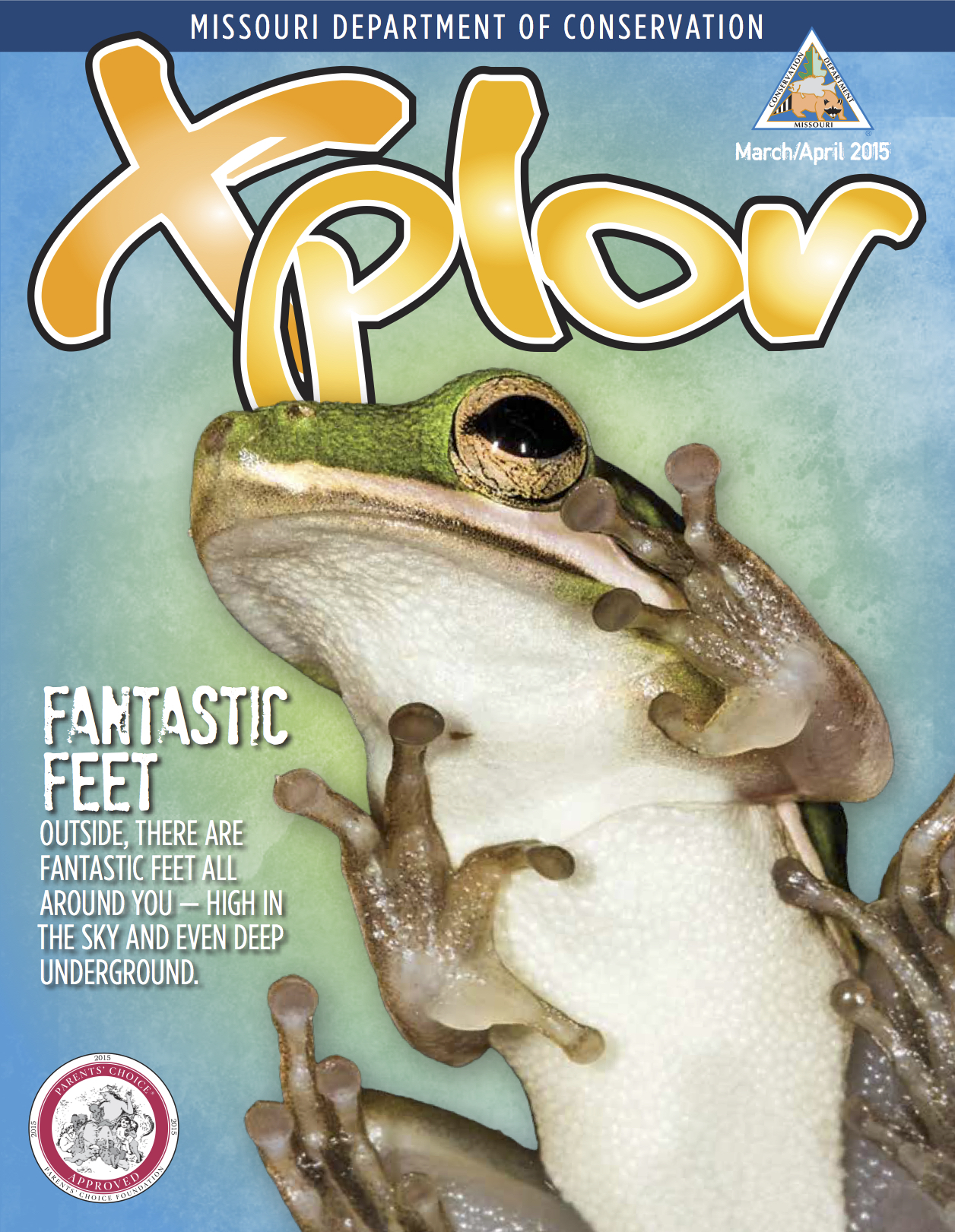Think feet stink? Then read on.
Feet are fantastic. Feet help us get where we need to go. You probably even know someone who can scratch their nose with a toe! Humans aren’t the only ones with fantastic feet. Fancy feet make many animals amazing, too. When you’re outside, there are fantastic feet all around you — high in the sky and even deep underground.
Beaver
The beaver is a sleek swimmer thanks to powerful, webbed back feet. It can swim as fast as you walk. Dinner stuck in your teeth? Not a problem if you’re a beaver. Beavers have a special double toenail on each back foot that serves as a handy toothpick when they get wood splinters stuck in their teeth. The double toenail also helps them groom to keep their coat well oiled and water repellent.
Eastern Mole
The mole is perfectly designed for life underground. The mole’s big and powerful front feet claw through the earth with a swimming motion. Webbed toes push dirt out of the way. A special extra bone attached to the wrist acts like a shovel edge. Some moles tunnel 15 feet per hour or up to 100 feet in a day. Always on the hunt, they eat half their body weight each day, including worms, grubs, and other creepy-crawlies.
Gray treefrog
Gray treefrogs are the masters of sticking on but not sticking out, thanks to suction cup toes and lots of camouflage. They produce slimy mucus that makes their large toe pads extra sticky. Treefrogs can hold on to not only the trees where they live, but also smooth surfaces like windows and flowerpots — any place that puts them closer to their next meal.
Osprey
Ospreys get right to the point, using sharp talons to capture fish. When these “fish hawks” spot a meal, they dive from up to 100 feet above the water and pluck fish with their curved claws. Like owls, ospreys can flip an outer toe around so that two toes point forward and two point backward to better grasp prey. Barbs on the birds’ feet help to grip slippery fish. Then, while still in flight, ospreys point the fish forward to reduce wind drag.
Six-spotted fishing spider
The fishing spider makes walking on water look easy by spreading its legs out wide. The spider is so light it doesn’t break through the water’s surface. It can also row, dive, and sail by raising two legs into a breeze. By trapping air bubbles on its legs, it can breathe underwater for half an hour. Measuring 2.5 inches long, this big spider can hunt on land, water, and deep below thanks to its fantastic feet.
Eastern gray squirrel
The eastern gray squirrel spends much of its time in tree branches and often scampers to the ground to gather or bury food. The squirrel has sharp claws for holding onto tree bark and acorns. Its back feet can turn backward and hold on tight — perfect for sprinting down a tree trunk headfirst or hanging from a local bird feeder.
Monarch
Monarchs, like many other butterflies, have “tongues” on their toes — they can taste with their feet. Aren’t you glad you can’t taste your two-day-old tube socks? Whew! When monarchs land on flowers or plants, they instantly know if the plants have nectar or are good places to lay eggs. Having tongues on their toes is more than just tongue-talizing trivia, it helps mother butterflies make sure their babies start out with a full-meal deal.
American coot
Although the coot bobs on lakes, it’s not a duck. A coot’s feet are almost comical. Their green feet are gigantic compared to their body size. Their toes have side flaps (or lobes) that help support the bird’s weight on mucky ground. Those feet become the next best thing to flippers when swimming. The flaps fold back on the forward stroke to move easily through the water. Then the flaps open up like a duck foot to paddle forward.
Raccoon
The black fur around a raccoon’s eyes looks like a robber’s mask, but the only thing this bushy-tailed bandit wants to steal is food. They pick berries and persimmons with their hands, just like humans. With their nimble fingers, raccoons also are good at untying knots, turning doorknobs, and opening jars. Having more nerve endings in their hands than humans means raccoon paws are supersensitive and well-equipped for the bandit life.
Red bat
While the red bat hangs upside down, its claws and special tendons keep a grip without using any muscles. This allows the bat to rest without falling from its roost (it can even remain hanging after death). Red bats don’t cluster in caves like many other bats. They spend their days hanging from tree branches, often by one foot, even when strong winds blow.
Bobcat
Bobcats are purrfect assassins. They usually keep their claws tucked into their paws so the claws stay razor sharp. But when a bobcat’s ready for business, out come its terrible toenails to hook into prey and hang on until the bobcat can put its teeth into play. Rabbits top the menu in Missouri, but bobcats will eat whatever they can catch. Thanks to an arsenal of sharp claws, jaws, and eyeballs, they catch quite a lot.
And More...
This Issue's Staff
Les Fortenberry
Karen Hudson
Regina Knauer
Nichole LeClair Terrill
Noppadol Paothong
Marci Porter
Mark Raithel
Laura Scheuler
Matt Seek
David Stonner
Stephanie Thurber
Cliff White






















